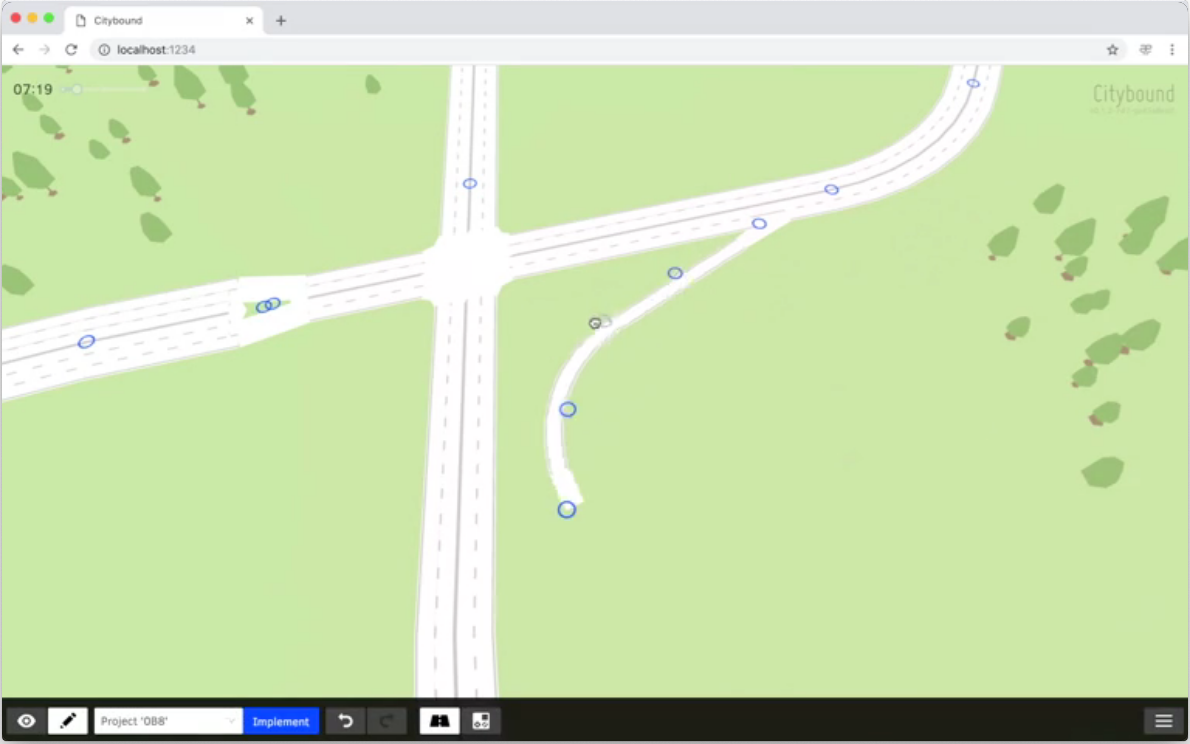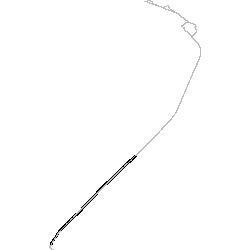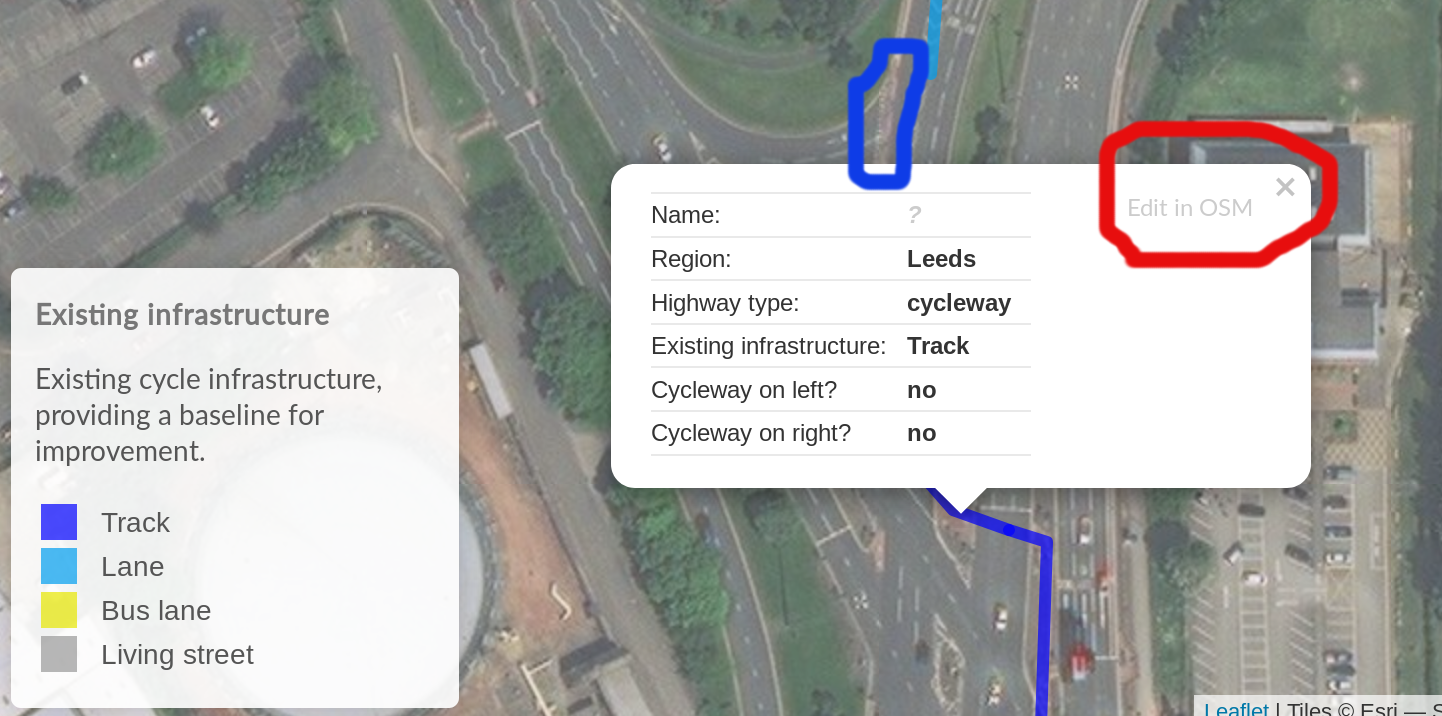The future of transport planning software
data-driven, modular and open
Robin Lovelace, University of Leeds
2018-01-08, Institute for Geoinformatics - Universität Münster
Abstract
Transport modelling software is a vital component of modern transport planning.
- They generate the evidence base on which strategic investments are made and, furthermore,
- provide a powerful mechanism for researching alternative futures.
Abstract
Transport modelling software is a vital component of modern transport planning.
- They generate the evidence base on which strategic investments are made and, furthermore,
- provide a powerful mechanism for researching alternative futures.
It would not be an overstatement to say that software determines the range of futures that are visible to policymakers. The focus of this talk is on the status of transport modelling software and how it may evolve in the future. What will they look like? What will their capabilities be? And who will control? Answers to each of these questions will affect the future of transport systems. With reference to my own experience developing R packages for transport planning (notably stplanr, cyclestreets and stats19) and using other tools,
Abstract
Transport modelling software is a vital component of modern transport planning.
- They generate the evidence base on which strategic investments are made and, furthermore,
- provide a powerful mechanism for researching alternative futures.
It would not be an overstatement to say that software determines the range of futures that are visible to policymakers. The focus of this talk is on the status of transport modelling software and how it may evolve in the future. What will they look like? What will their capabilities be? And who will control? Answers to each of these questions will affect the future of transport systems. With reference to my own experience developing R packages for transport planning (notably stplanr, cyclestreets and stats19) and using other tools,
- this talk will make the case that transport modelling software used in practice
will becomeis becoming increasingly data-driven, modular and open.
Current transport software
Current transport software
(Source: Crispin Cooper, author of sDNA)
The four stage model

Still dominates transport planning models (Boyce and Williams 2015)
The four stage model

Still dominates transport planning models (Boyce and Williams 2015)
Impacting the durrent software landscape
Dominated by a few proprietary products
Limited support community online
High degree of lock-in
Limited cross-department collaboration
Existing products
| Software | Company/Developer | Company HQ | Licence | Citations |
|---|---|---|---|---|
| Visum | PTV | Germany | Proprietary | 1810 |
| MATSim | TU Berlin | Germany | Open source (GPL) | 1470 |
| TransCAD | Caliper | USA | Proprietary | 1360 |
| SUMO | DLR | Germany | Open source (EPL) | 1310 |
| Emme | INRO | Canada | Proprietary | 780 |
| Cube | Citilabs | USA | Proprietary | 400 |
| sDNA | Cardiff University | UK | Proprietary | 170 |
User support
Getting help is vital for leaning/improving software
User support
Getting help is vital for leaning/improving software

User support
Getting help is vital for leaning/improving software

"10-Hour Service Pack $2,000" (source: caliper.com/tcprice.htm)
Online communities
gis.stackexchange.com has 21,314 questions
r-sig-geo has 1000s of posts
RStudio's Discourse community has 65,000+ posts already!
Online communities
gis.stackexchange.com has 21,314 questions
r-sig-geo has 1000s of posts
RStudio's Discourse community has 65,000+ posts already!
No transport equivalent (e.g. earthscience.stackexchange.com is in beta)
Potential for a Discourse forum or similar: transport is not (just) GIS
Future transport software
Gamification

- Completely open source, written in rust
- Source: video at https://aeplay.org/citybound
Code example / questions
Code example / questions
Talk is cheap, show me the (working) code
Code example / questions
Talk is cheap, show me the (working) code
Source: Linus Torvalds (lkml.org)
That we recorded on phone GPS
And uploaded to OpenStreetMap
That we recorded on phone GPS
And uploaded to OpenStreetMap

Loading the tracks
library(sf)## Linking to GEOS 3.7.0, GDAL 2.3.2, PROJ 5.2.0u = "https://www.openstreetmap.org/trace/2882954/data"download.file(u, "trace.gpx")st_layers("trace.gpx")## Driver: GPX ## Available layers:## layer_name geometry_type features fields## 1 waypoints Point 0 23## 2 routes Line String 0 12## 3 tracks Multi Line String 1 13## 4 route_points Point 0 25## 5 track_points Point 2447 26track = read_sf("trace.gpx", "tracks")track_points = read_sf("trace.gpx", "track_points")Static plotting
plot(track[1])plot(track_points)

'Data science' approach to transport modelling
- Problem: gpx files do not always contain speed
points2line_trajectory = function(p) { c = st_coordinates(p) i = seq(nrow(p) - 2) l = purrr::map(i, ~ sf::st_linestring(c[.x:(.x + 1), ])) s = purrr::map_dbl(i, function(x) { geosphere::distHaversine(c[x, ], c[(x + 1), ]) / as.numeric(p$time[x + 1] - p$time[x]) } ) lfc = sf::st_sfc(l) a = seq(length(lfc)) + 1 # sequence to subset p_data = cbind(sf::st_set_geometry(p[a, ], NULL), s) sf::st_sf(p_data, geometry = lfc)}Source: geocompr.github.io
Creating lines with attributes
l = points2line_trajectory(p = track_points)plot(l["s"])
All slow sections
l_slow = l[l$s < 20, ]plot(l_slow["s"])
Thanks for listening!
Thanks for listening!
A few links and references
Boyce, D.E., Williams, H.C.W.L., 2015. Forecasting Urban Travel: Past, Present and Future. Edward Elgar Publishing.
The Propensity to Cycle Tool: http://www.pct.bike/ - Lovelace, R., Goodman, A., Aldred, R., Berkoff, N., Abbas, A., Woodcock, J., 2017. The Propensity to Cycle Tool: An open source online system for sustainable transport planning. Journal of Transport and Land Use 10. https://doi.org/10.5198/jtlu.2016.862
Open source 'geocompr' book: Lovelace, R., Nowosad, J., Meunchow, J., 2019. Geocomputation with R. CRC Press.
The Cycling Infrastructure Prioritisation Toolkit: https://www.cyipt.bike/
Pebesma, E., 2018. Simple Features for R: Standardized Support for Spatial Vector Data. The R Journal.







